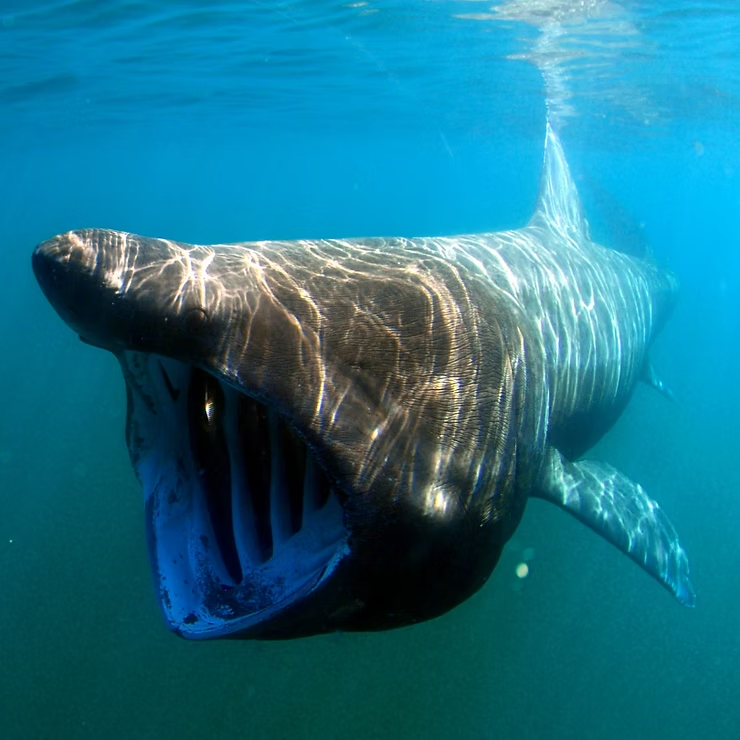Introduction
The basking shark is one of the largest fish in the ocean, known for its massive size, gentle nature, and unique filter-feeding habits. These marine giants have fascinated scientists and ocean enthusiasts alike with their slow, graceful movements and migratory behavior.
Appearance
Basking sharks can reach lengths of 20–32 feet and weigh over 5,000 pounds. They have a large, rounded snout, a massive mouth up to 3 feet wide, rough grayish-brown skin, small eyes, and five gill slits on each side. Their hook-shaped teeth are rarely used, as they primarily feed by filtering plankton.
Habitat
Basking sharks are found in temperate and cold waters worldwide, often near coastal areas, continental shelves, and upwelling zones. They inhabit both coastal and pelagic environments but are rarely found in tropical waters.
- North Atlantic, North Pacific, Mediterranean Sea
- Coastal areas, estuaries, and bays
- Tolerant of a wide range of temperatures
Diet and Feeding
Basking sharks are filter feeders. They swim with their mouths open, straining plankton and small fish through their gill rakers. They can filter up to 2,000 tons of water per hour and consume up to 2,000 pounds of plankton daily.
- Mainly feed on plankton
- Consume small fish and crustaceans occasionally
- Gentle giants—pose no threat to humans
Behavior
Basking sharks are slow-moving and gentle. They often bask near the surface, feeding and sometimes forming feeding aggregations to increase their chances of finding plankton. Vertical migration allows them to dive deeper during the day and return to the surface at night.
Migration Patterns
These sharks are highly migratory, traveling long distances in search of food and breeding grounds. They follow nutrient-rich ocean currents and upwelling zones, ensuring access to abundant plankton throughout the year.
Conservation Status
Basking sharks are listed as vulnerable. Overfishing, boat strikes, and pollution threaten their populations. Efforts to protect them include establishing marine protected areas, research and monitoring programs, and public awareness campaigns.
Sightings
Basking sharks are commonly observed in temperate coastal waters. Popular locations include the Isle of Man, Hebrides, and Bay of Fundy. Divers and fishermen often report encounters, particularly during summer months when sharks feed near the surface.
Threats
- Fishing: Bycatch and historical hunting for liver oil and fins
- Boat strikes: Sharks swim near the surface and are vulnerable to collisions
- Pollution: Chemical and plastic pollution can harm their health and reproduction
Conservation Efforts
- Protected Areas: Isle of Man, Malin Head, and other marine reserves
- Research & Monitoring: Tagging, visual surveys, and migration tracking
- Public Awareness: Education programs, social media campaigns, and sustainable practices
Conclusion
The basking shark is a magnificent, gentle giant of the ocean. Its filter-feeding habits, migratory behavior, and key role in marine ecosystems make it a species worth protecting. Observing these sharks is a rare and awe-inspiring experience, highlighting the beauty and fragility of ocean life.

